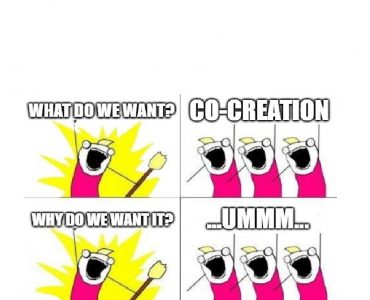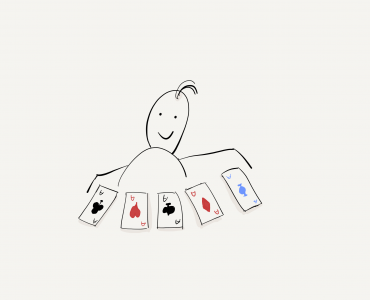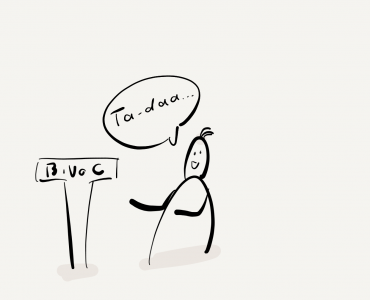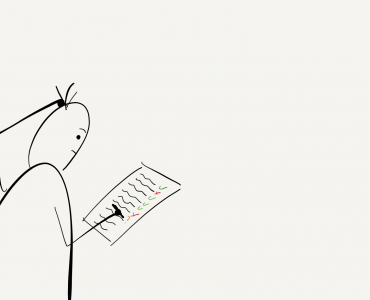In this section I look at how much the co-creative aspect of Swiss Direct Democracy has influenced other areas of life in Switzerland – specifically co-creation efforts of companies (see earlier post) and...
Direct Democracy’s Effects on Companies
As you could see in the introduction and Swiss direct democracy sections, co-creation is engraved into Swiss politics. Citizens know they have the right and opportunity to influence decisions. Government has ben shaped...
Swiss Direct Democracy analysis – key characteristics
Without further ado, here are the top characteristics of Swiss direct democracy that I identified in my research. We will return to this later.
Direct democracy – debates, discussion and trends
So after the analysis but before the summary, I wanted to show also some of the criticism and trends of the Swiss Direct Democracy system. Because, oh boy, it is not perfect. But as you will see, improving it is not a...
Direct democracy – a service design analysis II, challenging a law
There is a process in Swiss Direct Democracy called ‘Optional Referendum’. This enables any citizen to reactively challenge laws and regulations once they are issued by the parliament. Let me restate that:...
Direct democracy – a service design analysis: the red booklet
As mentioned earlier, the red booklet is the tool issued by the government inform voters about referendum details. It as an awesome document, here’s whey: Information is presented from multiple perspectives...
Direct democracy – a service design analysis I/b, details of changing the constitution
As shown in the previous post, I did a service design analysis of Swiss direct democracy, to really get into the details of how co-creation is done from a citizen perspective. You can find the multi-stakeholder service...
Direct democracy – a service design analysis I/a, changing the constitution
In my research of Swiss Direct Democracy (SDD), I only identified visualizations of its processes that focus on workflow or timing. These do not represent a citizen point-of-view, and omit the small details that can...

Direct democracy – an organizational analysis VI: Rewards
This is the final post looking at an organizational analysis of Swiss direct democracy. Rewards are meant to align the goals of the people with the goals of the organization, and provide motivation for completion of the...
Direct democracy – an organizational analysis V: People
These few posts are an organizational analysis of Swiss direct democracy. While normal organizations hire and fire people, a country ‘s citizens are born (or naturalized), and they can’t just be fired...
Direct democracy – an organizational analysis IV: Processes
These few posts are an organizational analysis of Swiss direct democracy. Aaaah, I love processes! Brace yourself, this is a bit longer, but very interesting part. You might think that in a democracy, elections are the...
Back after a break
Ok, the past months were not too active, but that’s because the subject of this blog (my EMBA thesis) needed to be finalized, and defended. Spoiler alert: it is now final and defended! So, at least you now know...
Direct democracy – an organizational analysis III: Structure
“Structure” determines the placement of power and authority. And this is where Swiss Direct Democracy (SDD) really blew my mind. Traditional democracies have three branches of power: legislative, executive...
Direct democracy – an organizational analysis II: Strategy
Strategy is goals, objectives, values and missions of an organization. The objective of direct democracy is to let people have a direct say – democracy by the people. This manifests in power sharing, also called ‘system...
Direct democracy – an organizational analysis I: Introduction
The goal of this organizational analysis was to identify how specific elments of Swiss Direct democracy align with the entire Swiss political decision-making ecosystem. I relied on the qualitative ‘Star Model’ tool of...
Direct democracy – a “co-creation” analysis II.
The previous post looked at overlaps in Drivers and Mindset between the literature of “co-creation”, and the realities of Swiss direct democracy. This post is the conclusion of the comparison. Below is a...
Direct democracy – a “co-creation” analysis I.
I analyzed Swiss direct democracy from 3 aspects. The first one was a co-creation analysis. Here I looked at how the system aligns with my findings from co-creation literature. I summarized the findings of my co...

























